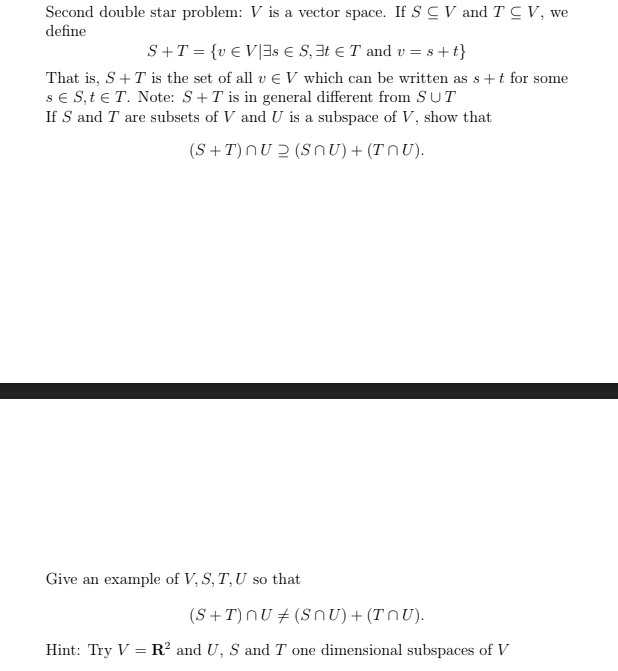

I mean you can formally take dot products, but they don't have such nice properties except in Q, R, C, and the like.Ħ) Generally no: You can replace an element of a basis with the product of that element and a scalar other than 0 or 1 to get a new basis. u/LurkerMorph gave some good answers, but I'll give my own variants:ģ) In Euclidean space (which is probably what you're thinking about) of dimension 3, what axioms of a vector space are violated by a subset consisting of a proper subset of a plane that is not also a line or a point? How about a subset that does not contain the origin?Ĥ) Linear transformations can be nicely decomposed based on how they act on particular subspaces in particular, a matrix records how a linear transformation between finite-dimensional vector spaces acts on each element of a basis (each column is where a certain basis element in the domain is mapped to, in terms of the given basis of the codomain).ĥ) If the scalar field is a subfield of the complex numbers, then only the trivial subspace has finite cardinality it is possible to do linear algebra over finite fields (and more than that, every finite field is itself a vector space over a field of prime order), where all finite-dimensional vector spaces also have finite cardinality, but the interesting stuff involving inner products doesn't quite work, because finite fields cannot be ordered fields (the field of complex numbers does work, because it's also a vector space over the reals, and ordered field). It is, roughly speaking, "equal" to the real line. The line y=0 is a subspace of the euclidean plane. However, knowing when a subset of a vector space is also a vector space gives you information about that particular subset. I do not think I can give you real life applications of subspaces in particular. The subspaces of these spaces all "look" different. There are vector spaces whose vectors are functions, matrices, polynomials, etc. But vector spaces are more general structures. For example, in the euclidean plane, lines that go through the origin are subspaces (can you find me more subspaces?). It must adhere to a certain list of axioms.

When is a subset also a vector space? to answer this question refer to the definition of a vector space. Let W be a subset (not necessarily a subspace) of a vector space V. I will try to answer your questions in a way to try to make you develop some intuition about subspaces.


 0 kommentar(er)
0 kommentar(er)
